Lord Shiva The Rudra
Lord Shiva the supreme
Lord Shiva is the ultimate reality; He is the supreme God given a form to be enjoyed by the devotees. He is the only one without a second; the creator, preserver as well as the destroyer of our world. As per our puranas, scriptures, mythology and popular beliefs, Lord Shiva spends his life meditating in the Kailash Parbat, one of the highest peaks in the Himalayas. We know him as the husband of Devi Parvati and father to Kartikeya and Ganesha. The most venerated among the trinity, here are the most interesting and unknown facts about Lord Shiva.
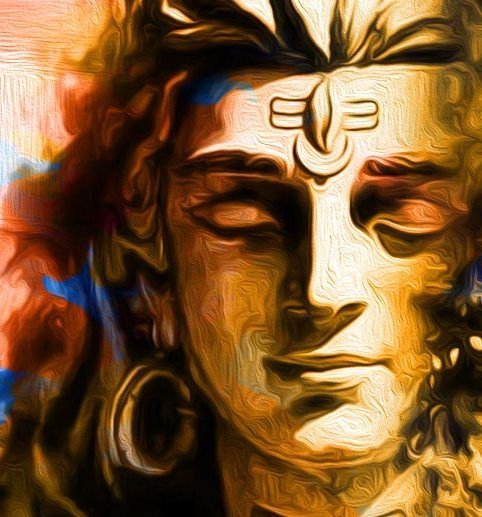
Lord Shiva is everything!
Popular known as Mahadeva, Lord Shiva is the main god in Hinduism as well as Shaivism. He is also one of the three most influential male deities in Hinduism - Brahma, Vishnu and Mahesh. As per the Smarta traditions, he is one of the five primary forms of Gods. Shiva is transcendent, limitless, formless, eternal, changing and unchanging, all at once! He is at once benevolent and invokes fear of the highest form. He symbolizes the life after death or Moksha. He directs the creations towards the changeless and eternal source from which they all emerged.
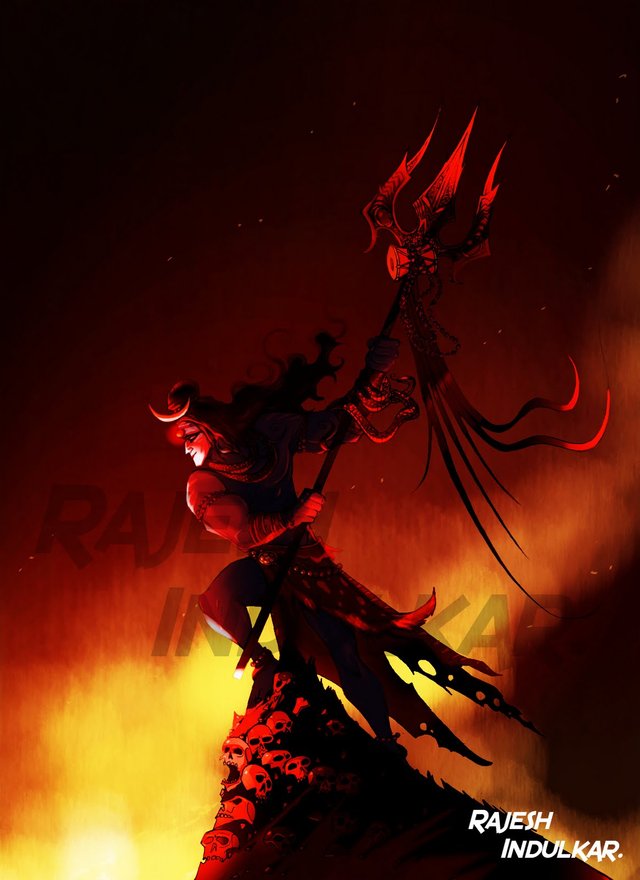
Lord Shiva's third eye
One of the iconographical attributes that sets lord Shiva apart is the presence of the third eye on his forehead. Shiva’s third eye represents the future. Therefore He is viewed as the Lord of all three times – past, present and future. Also, while the two eyes stand for sun and moon, the third eye stands fo Agni or fire. He is depicted wearing a snake named Vasuki, coiled around his neck; a crescent moon adorns his hair as Holy River Ganga flows out from his head. His trident or Trishul is an important part of his identity that he uses as his weapon and the damru, his musical instrument of choice. The objects Shiva carries in his hands signify the five elements projecting the Lord as the Supreme head of creation.
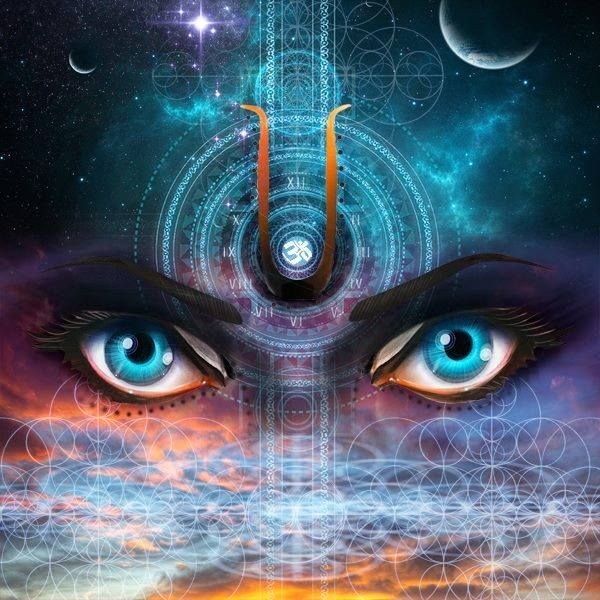
108 names of Lord Shiva
He is known by many names such as Mahadev, Neelkantha, Shiva, Shankar, Mahakaal, Shrikanth, Triolokesh, Gangadhar, Jatadhar, Visveshwar, Tripurantaka, Mrityunjaya, Sarveshwar, Sadashiva, etc. Lord Shiva has more than 108 names. Each of Lord Shiva’s names talk of his special attribute or a quality or a mythological event. Therefore it is very interesting to know them and research the meaning behind His names
Importance of 108 in hinduism
Just like there are 108 names of Lord Shiva, the number 108 has a huge significance in Hinduism. Click to know why the number 108 is important in Hinduism Here Let us explore the unknown facts about Lord Shiva!
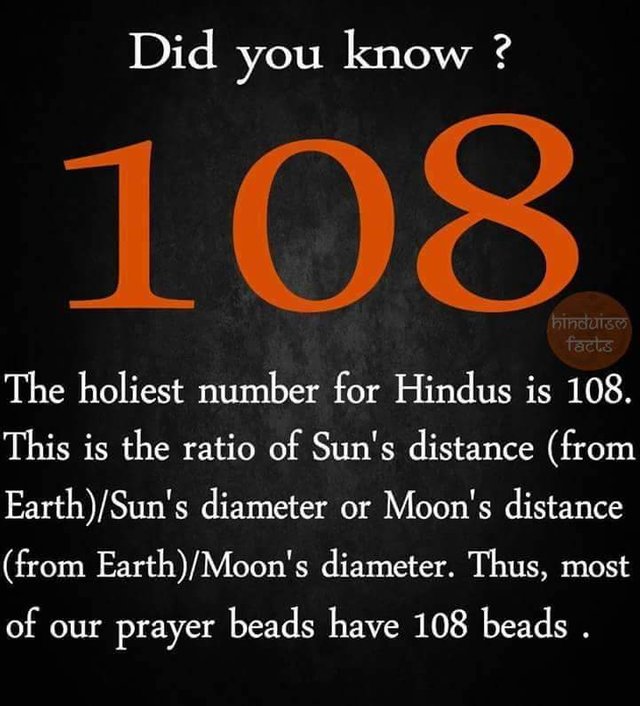
Lord Shiva tha Nataraja
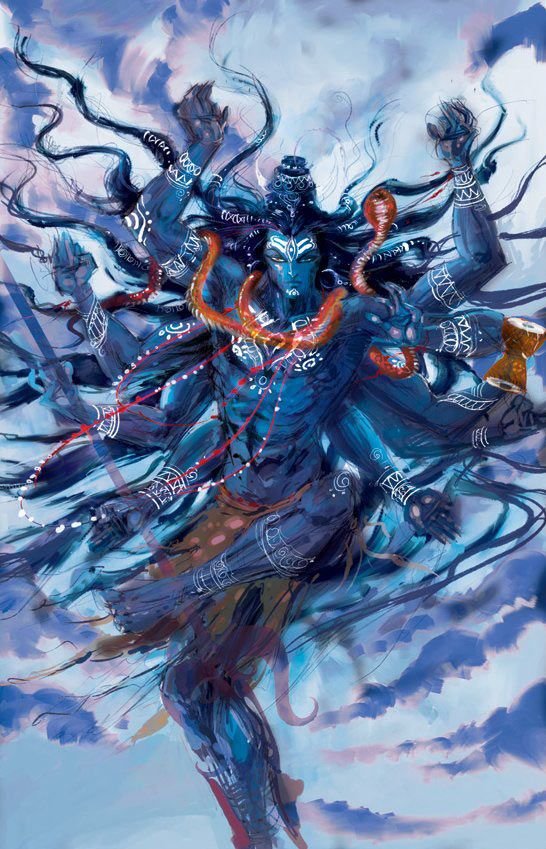
Often depicted in the form of a Nataraja, the dancing form of Lord Shiva, he is the God of dance. Unleashing his fierce temple, he performs the tandav to destroy the universe and makes way for Lord Brahma to restart the process of creation. Therefore, Lord Shiva is also a symbol of change as change is the only constant. Birth, death and rebirth are part of the same lifecycle. Therefore Shiva indicates timelessness through his divine dance. His dances depict different moods and acts associated with the godhead. Shiva’s tandava is the source of origin of all the dance forms on the earth.
Lord Shiva's crescent moon and Trishul's significance
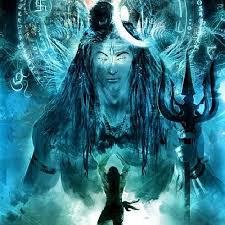
The Crescent moon on his head is the symbol of a time cycle. Lord Shiva carries a Trishul or a Trident. This Trishul has three spikes and these three spikes represent the three gunas such as sattva, rajas and tamas. Sattva is the basis of creation while rajas stands for continuity and Tamas is the base of destruction. Lord Shiva is the creator, preserver as well as the destroyer of all creation. Trishul is the symbol of spiritual progress wherein a devotee overcomes all the three gunas and marches forward in the spiritual life.
Why Lord Shiva wears snakes around his neck?
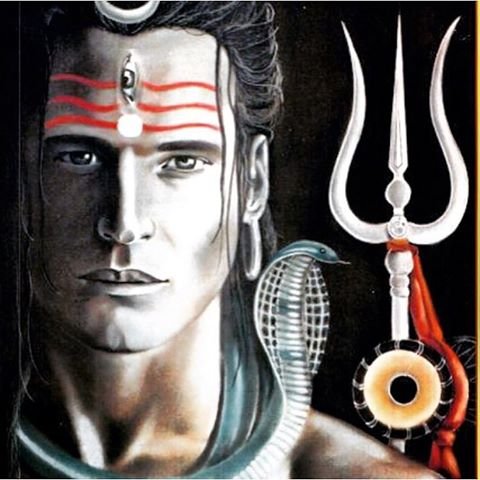
Lord Shiva has the serpent king Vasuki coiled around his neck. As per various legends, there are many theories as to why Shiva wears snakes on him. Snakes, the very creatures evoked a lot of fear and danger in human beings. By wearing snakes, Shiva portrays that he controls death and fear. The three snakes on Lord Shiva are symbols of past, present and future. This depicts that Lord Shiva is untouched by time and controls it. Staying amidst deadly snakes, he is unperturbed. Similarly he indicates that the devotees must not be disturbed by the external world.
Lord Shiva as Neelkantha
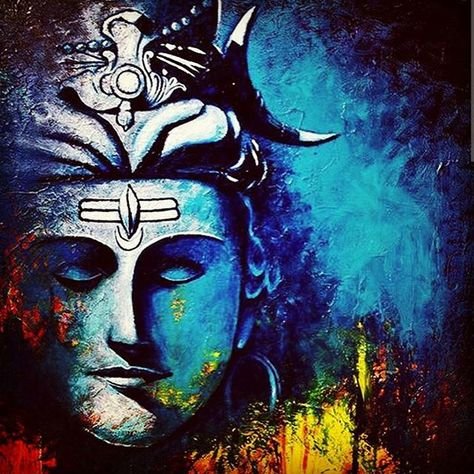
Shiva is also known as Neelkantha. As per legends, during Samudra Manthan, i.e. churning of the milky ocean in search of the amrit, the demons and gods came across a deadly poison that could kill the entire creation. Therefore, they sought Lord Shiva's help. Lord Shiva drank the poison in order to restore peace and due to the poison, his throat turned blue. Hence, he is known as Neelkantha. This incident reveals the highest compassion of Lord Shiva for His children.
Lord Shiva as Ardhanarishvara
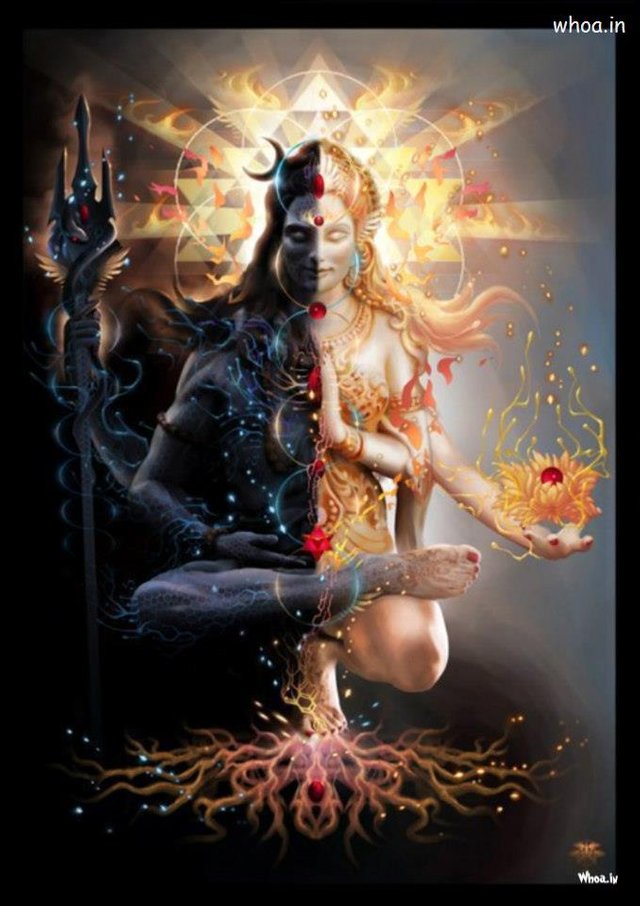
Many a times, lord Shiva is portrayed as half himself and half his female counterpart who is known as Shakti or Uma, Parvati and even Sati. This form of Lord Shiva is known as Ardhanarishvara, i.e. half male and half female, split down right from the centre. The right is male and left side is female. This form is a representation of combination of the masculine energy and the feminine energy, the Purusha Prakriti. This form enunciates that the male form is incomplete without the female form. It indicates that womanhood on the earth deserves equal importance as that of men.
Lord Shiva is the active as well as the passive force
The half-male and half-female combination is the symbol for the unity of opposites in the world. Male is seen as a passive force while the female is the active force. It depicts that God is neither man nor woman but is both.The left side of Shiva is always female because it is on the left side where the heart resides. The heart represents intuition, creativity, gentleness and love. The right side represents the brain, logic and power.
Shivling, the unique depiction of Lord Shiva
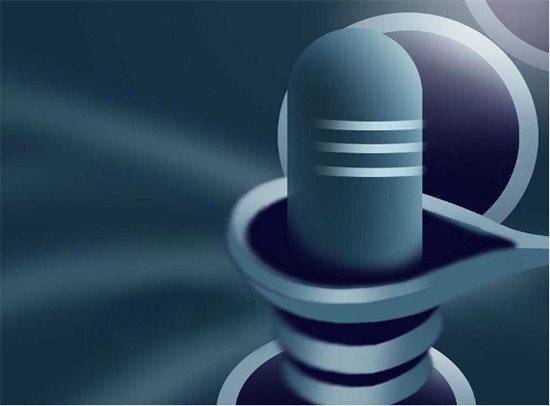
Shivling is an aniconic image used to represent Lord Shiva. It indicates the formless aspect of Shiva. It says Lord Shiva is without a beginning and an end. Like the ‘Big Bang’ theory, scriptures say Shivling is the origin and destination of the entire cosmos. The word Linga is made of two sounds namely ‘Li’ that stands for ‘Liyate’ or emergence and ‘Ga’ that denotes ‘Gamyate’ or the final destination.
Lord Hanuman was Shiva's 11th reincarnation
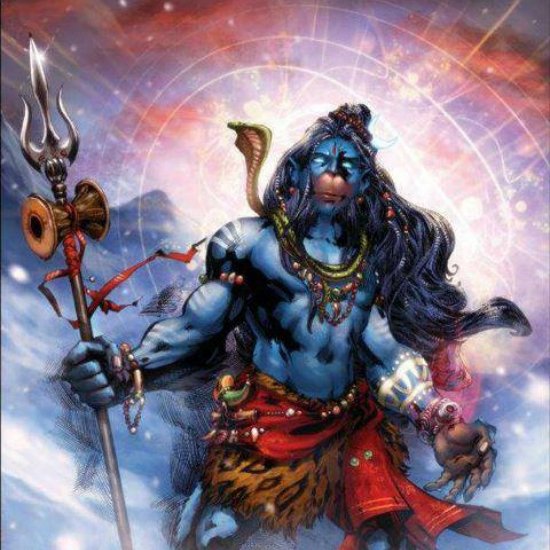
As per Hanuman Chalisa, Lord Hanuman was the 11th reincarnation of Shiva. Further, the Monkey God is often referred to as Rudraavataar, i.e. the reincarnation of Rudra and Lord Shiva is also known to be an aspect of Rudra. Hanuman’ s Vanar sena helped Lord Rama win the war against Ravana. Therefore, Maruti Bhagwan, as lord Hanuman is also known, is worshipped by people for his devotion to lord Ram.